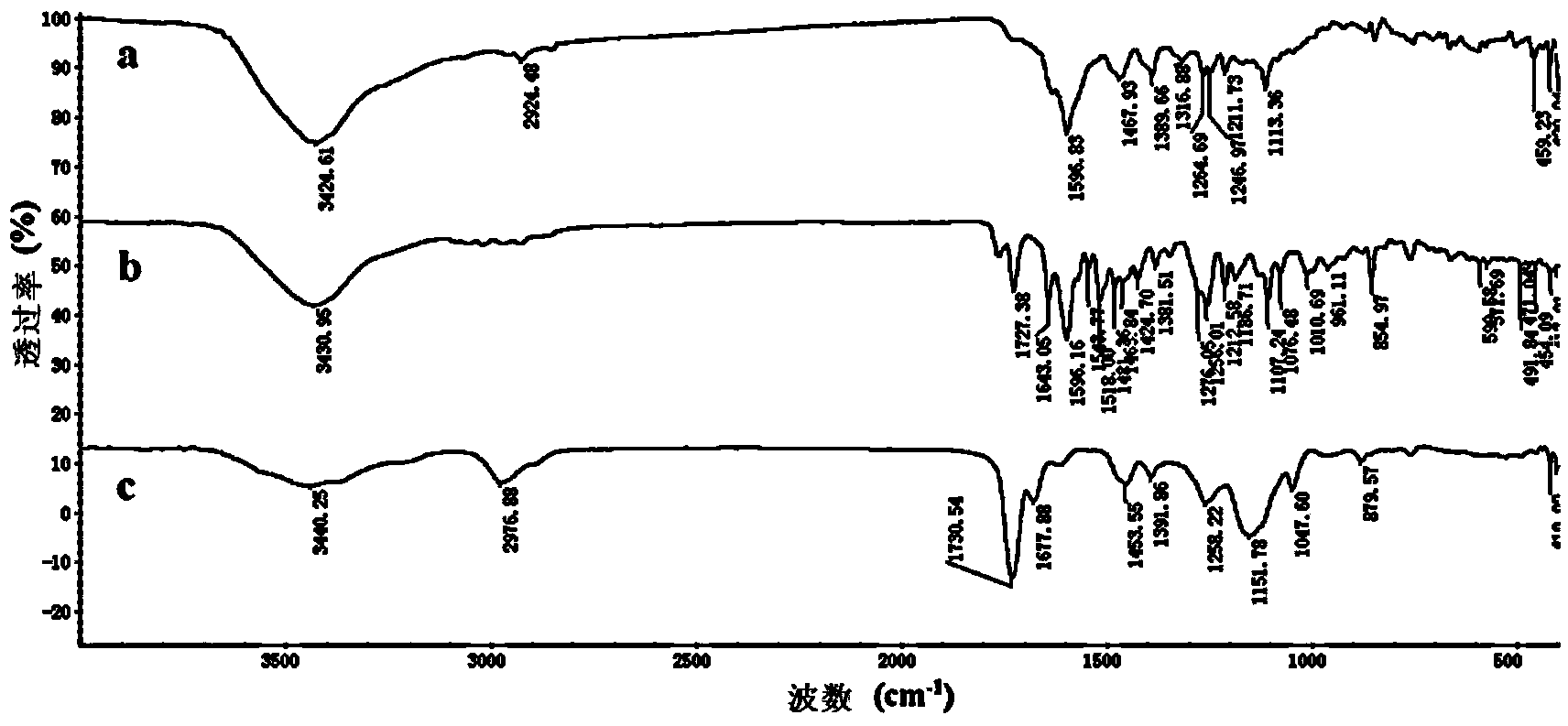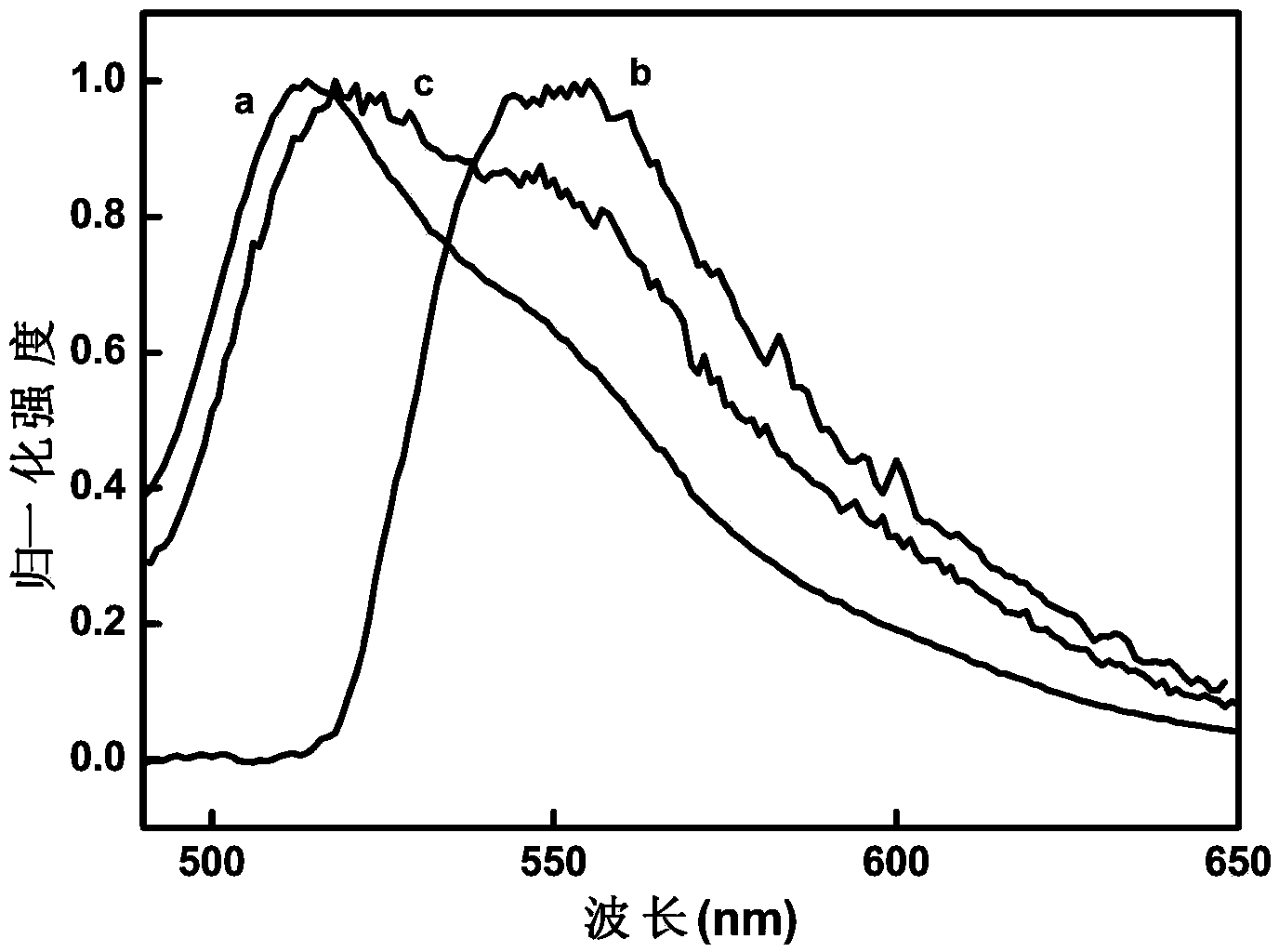Method for preparing molecularly imprinted polymer for fluorescence detection of cyhalothrin
A technology of cyhalothrin and molecular imprinting, applied in chemical instruments and methods, other chemical processes, etc., can solve the problem of few composite fluorescent molecular imprinting materials, and achieve the effect of high sensitivity and strong signal
- Summary
- Abstract
- Description
- Claims
- Application Information
AI Technical Summary
Problems solved by technology
Method used
Image
Examples
Embodiment 1
[0027] Dissolve 0.1 mmol of the template molecule cyhalothrin, 0.0105 g of allyl fluorescein and 0.4 mmol of the functional monomer (AM) in 30 mL of acetonitrile, ultrasonically oscillate, and pre-polymerize at room temperature for 12 hours to fully interact with the functional monomer and cyhalothrin , add cross-linking agent EDMA (0.8 mL) and initiator AIBN (30 mg), degas the above mixture by ultrasonic oscillation for 3~4 min, then pass nitrogen gas for 10 min to evacuate, and seal under nitrogen atmosphere. Thermally initiated polymerization was used to heat it in a constant temperature oil bath at 60 °C for 24 h. After the polymerization was completed, a yellow precipitated polymer was obtained. It was eluted with 10% methanol solution of acetic acid (V / V) to remove the template molecules, and then the precipitate was repeatedly soaked with methanol solution to wash away the residual acetic acid, and dried in vacuum. That is, F-MIPs are obtained. The method for preparing...
Embodiment 2
[0029]Dissolve 0.1 mmol of the template molecule cyhalothrin, 0.0105 g of allyl fluorescein and 0.4 mmol of the functional monomer (AM) in 60 mL of acetonitrile, ultrasonically oscillate, and pre-polymerize at room temperature for 12 hours, so that the functional monomer and cyhalothrin can fully interact , add cross-linking agent EDMA (1.6 mL) and initiator AIBN (60 mg), degas the above mixture by ultrasonic oscillation for 3~4 min, then pass nitrogen gas for 10 min to evacuate, and seal under nitrogen atmosphere. Thermally initiated polymerization was used to heat it in a constant temperature oil bath at 60 °C for 24 h. After the polymerization was completed, a yellow precipitated polymer was obtained. It was eluted with 10% methanol solution of acetic acid (V / V) to remove the template molecules, and then the precipitate was repeatedly soaked with methanol solution to wash away the residual acetic acid, and dried in vacuum. The method for preparing F-NIPs is the same as abov...
Embodiment 3
[0031] First, 5 concentrations of cyhalothrin standard ethanol solutions (0, 0.1, 0.25, 0.5, 1.0 nM) were accurately prepared, 100 mg of fluorescent imprinted polymer was weighed and dispersed in 100 ml of ethanol, and ultrasonically oscillated for 30 minutes. Measure 5 ml of each of the prepared 5 kinds of cyhalothrin solutions, transfer them into 10 ml colorimetric tubes, then add 5 ml fluorescent polymer dispersion into each colorimetric tube, sonicate for 3-5 minutes, and let stand for 2 minutes . The fluorescence intensity of the dispersion in each colorimetric tube was detected by a fluorescence spectrophotometer, and the fluorescence intensity-concentration standard curve was drawn according to the Stern-Volmer equation. fluorescence quenching see Figure 4 .
PUM
 Login to View More
Login to View More Abstract
Description
Claims
Application Information
 Login to View More
Login to View More - R&D Engineer
- R&D Manager
- IP Professional
- Industry Leading Data Capabilities
- Powerful AI technology
- Patent DNA Extraction
Browse by: Latest US Patents, China's latest patents, Technical Efficacy Thesaurus, Application Domain, Technology Topic, Popular Technical Reports.
© 2024 PatSnap. All rights reserved.Legal|Privacy policy|Modern Slavery Act Transparency Statement|Sitemap|About US| Contact US: help@patsnap.com










